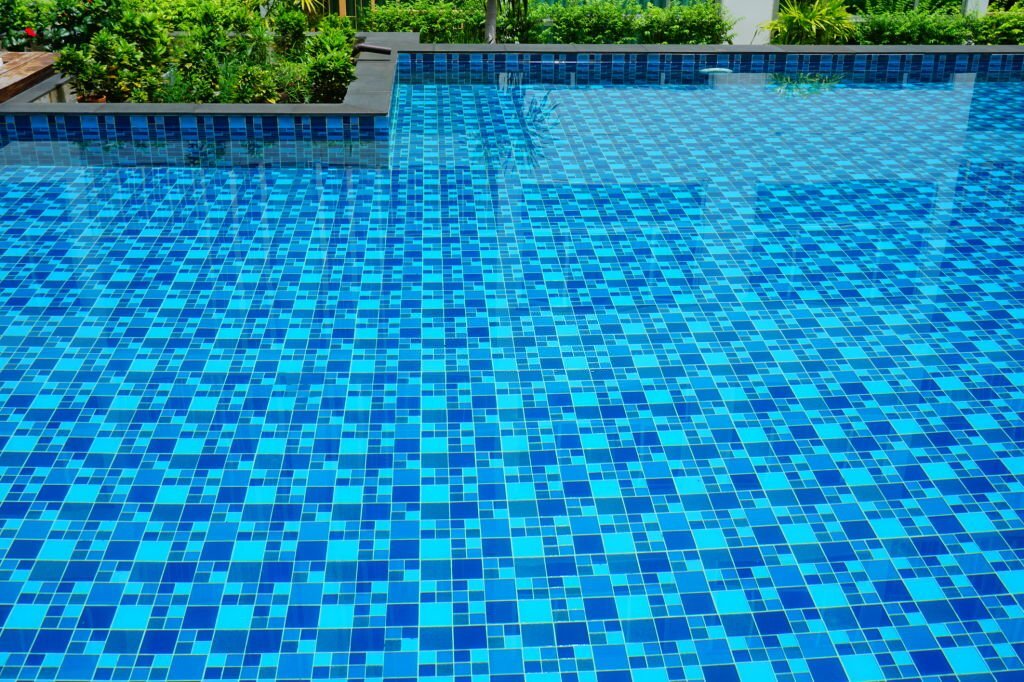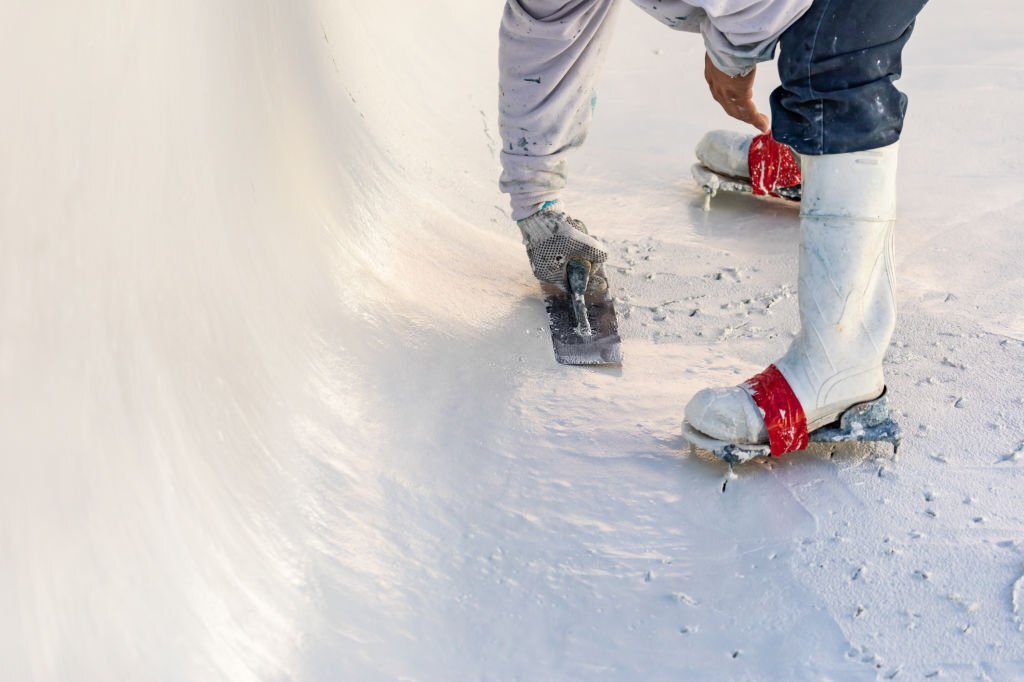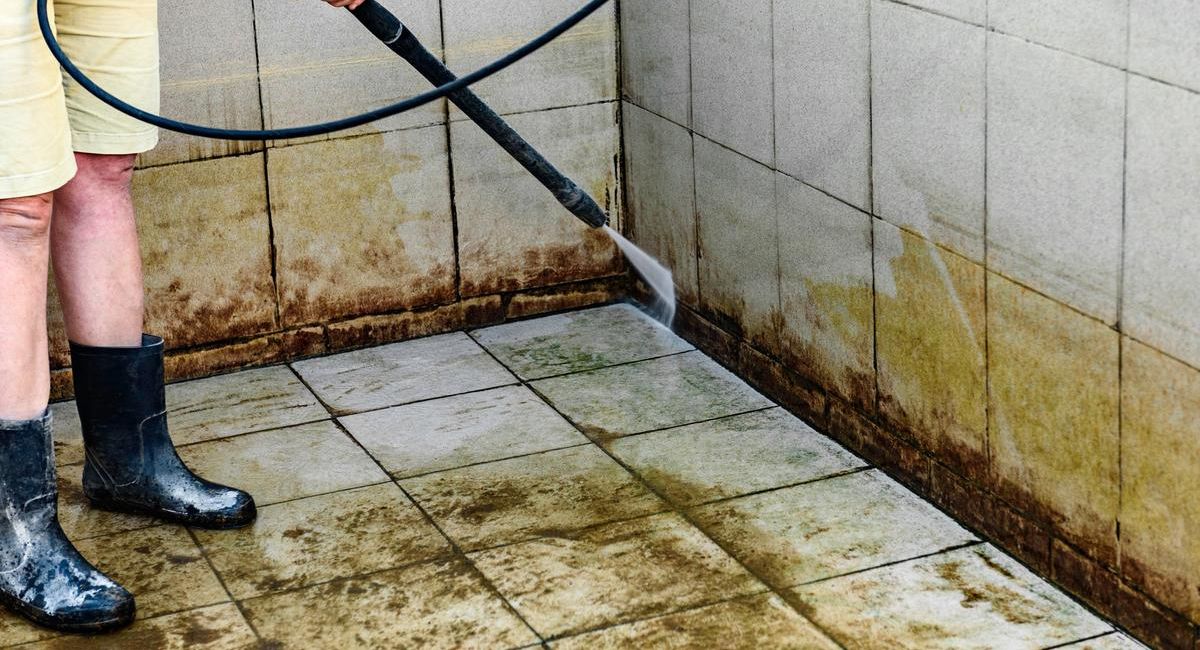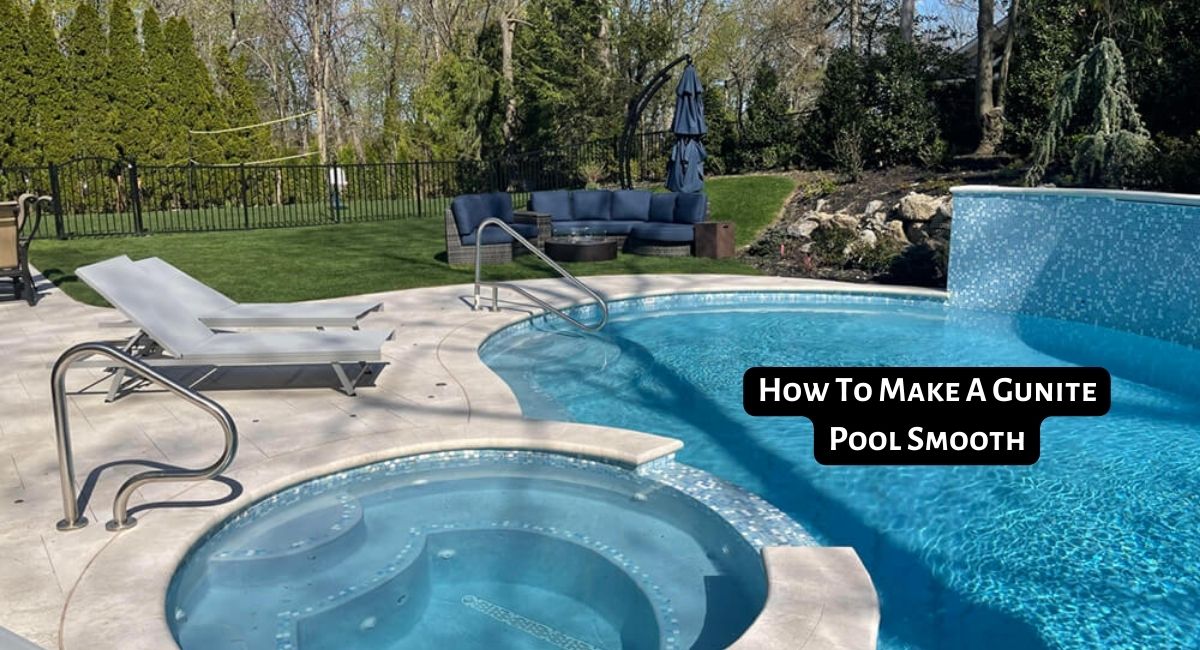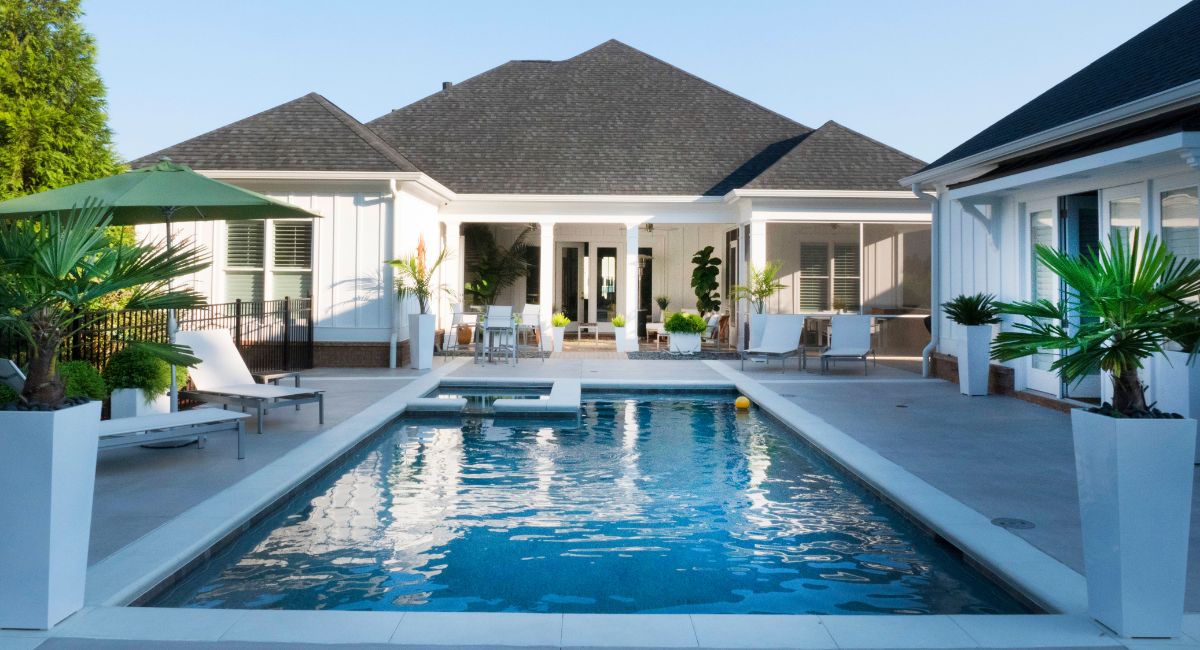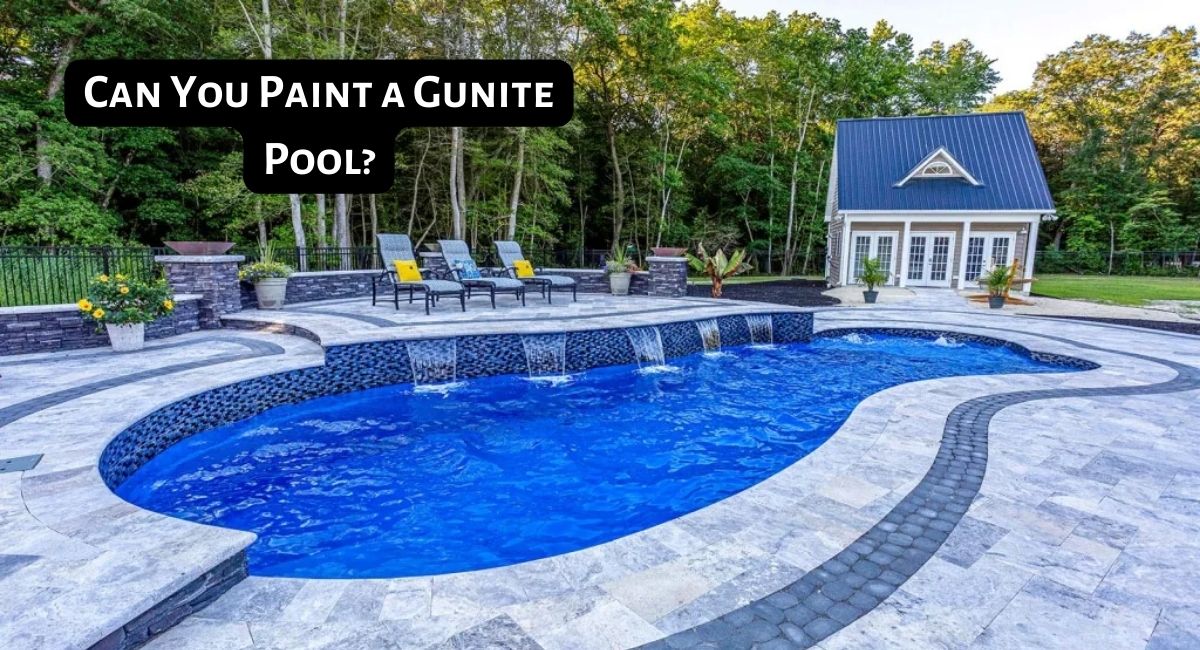Imagine diving into a pool with a surface so smooth it feels like silk under your fingertips. That’s the magic of Gunite pool finishes. In this article, we’ll explore the various types of Gunite pool finishes that can turn your backyard oasis into a work of art.
From classic plaster to vibrant pebble and everything in between, you’ll discover the perfect finish to make your pool both beautiful and long-lasting. So, let’s dive right in and explore the world of Gunite pool finishes!
Table of Contents
What Are The Different Types Of Pool Finishes
Swimming pool finishes come in various materials and styles, each offering a unique aesthetic and functional appeal. Below are some of the most common types of pool finishes.
When choosing a pool finish, it’s essential to factor in not only the initial cost but also the longevity and maintenance requirements. Additionally, regional factors such as weather, water quality, and UV exposure can influence the lifespan and appearance of a pool finish over time. It’s always advisable to consult with pool professionals to get a comprehensive understanding of the best option for a specific situation.
1. Plaster Finishes
- Lifespan: 5-15 years, depending on maintenance and water chemistry.
- Pros: Affordable; classic, smooth appearance.
- Cons: Prone to staining, discoloration, and algae growth; can become rough over time.
White Plaster: This is the oldest and most common type of pool finish. It’s made from a combination of white cement, white marble aggregate, and water. This finish provides a smooth, classic appearance. However, over time and without proper maintenance, white plaster can become susceptible to discoloration, staining, and algae growth.
Colored Plaster: Essentially the same as white plaster but with dyes or pigments added for color. These can be tailored to match the aesthetic of the surrounding area but might fade over time due to chemical exposure and the sun.
2. Pebble Finishes
- Lifespan: 12-20 years.
- Pros: Highly durable; natural, lagoon-like appearance; non-slip texture.
- Cons: Can be rough on feet; more expensive than plaster.
This is a premium finish made by embedding small, smooth river pebbles into the plaster. Once applied, the surface is washed to reveal the pebbles. Pebble finishes are known for their durability, often lasting 12-20 years, and their non-slip texture. They also provide a natural, lagoon-like appearance. However, they can be rough on the feet for some.
3. Quartz Finishes
- Lifespan: 10-15 years.
- Pros: Durable; resistant to pool chemicals and UV rays; customizable color options.
- Cons: More expensive than standard plaster; can be slightly rougher than pure plaster.
Quartz finishes mix plaster with crushed quartz. The addition of quartz makes the surface more durable and resistant to the adverse effects of pool chemicals and UV rays. It also offers a more varied and customizable color palette than traditional plaster.
4. Glass Bead Finishes
- Lifespan: 10-15 years.
- Pros: Unique, shimmering appearance; durable; stain-resistant.
- Cons: Among the more expensive finishes; can be slippery when wet.
This finish provides a unique, radiant appearance. Tiny glass beads are mixed with plaster to give a shimmering effect, especially when sunlight hits the pool. Glass bead finishes are durable and resistant to staining.
5. Tile Finishes
- Lifespan: Over 25 years with proper maintenance.
- Pros: Extremely durable; vast array of design options; non-fading colors.
- Cons: Expensive installation; grout lines can become discolored and may need periodic re-grouting.
Ceramic Tiles: Traditional pool tiles made from clay and fired at high temperatures. They come in various colors, patterns, and sizes and are known for their durability.
Porcelain Tiles: These are denser and less porous than ceramic tiles, offering a more refined appearance and added resistance to water absorption.
Glass Tiles: These tiles provide a luxurious, high-end look. They catch and refract sunlight, creating a sparkling effect in the water. While they’re stunning, they’re also among the most expensive pool finishes.
Stone Tiles: These natural tiles offer a rustic, elegant look and can be sourced from materials like slate, granite, or travertine. They provide a non-slip surface but require regular sealing to prevent water absorption.
6. Vinyl Liner
- Lifespan: 5-10 years.
- Pros: Cost-effective; customizable designs; smooth surface.
- Cons: Less durable; prone to tears and punctures; requires replacement more often than other finishes.
Vinyl liners are essentially custom-made bags that fit into the shape of your pool. They’re held in place along the top edge by a track. While they’re more affordable upfront, they are less durable than other finishes and can be prone to tearing. They typically need replacement every 5-10 years.
7. Fiberglass
- Lifespan: 20-25 years.
- Pros: Smooth surface; algae-resistant; quick installation.
- Cons: Limited shapes and sizes; can fade over time; repairs can be challenging to color match.
Fiberglass pools are factory-molded into various shapes and sizes. The shell is then placed into an excavated hole. These pools are smooth to the touch, non-porous, and resist algae growth. They also have a relatively quick installation process.
8. Eco-Finish
- Lifespan: 10-15 years.
- Pros: Resistant to chipping and peeling; rejuvenates appearance of older pools; durable.
- Cons: Newer to the market, so long-term data is limited; application process requires specialized equipment.
A newer option, the eco-finish is a durable, plastic-based coating. It’s pneumatically applied, providing a finish that resists chipping, peeling, and staining. This type of finish can be applied over old plaster or other finishes to rejuvenate a pool’s appearance.
9. Aggregate Finishes
- Lifespan: 10-20 years.
- Pros: Textured, durable surface; various color and style options.
- Cons: Can be rougher than plaster; mid to high cost.
These finishes are a mix of plaster with other materials like pebbles, glass beads, or quartz. The result is a textured, durable surface that can come in various colors and styles.
10. Polished Marble Finishes
- Lifespan: 7-12 years.
- Pros: Luxurious, sleek appearance; smooth surface.
- Cons: Susceptible to chemical imbalances; more expensive than standard plaster; can stain.
This involves applying a marble-based plaster to the pool, followed by a polishing process. The result is a sleek, shiny, and smooth surface. It offers a luxurious look but can be more susceptible to chemical imbalances in the pool water.
Conclusion
Gunite pools offer a versatile canvas for various types of finishes, allowing homeowners to customize their pool’s appearance and durability to suit their preferences and budget. From classic white plaster for a timeless look to more elaborate options like pebble, glass bead, or tile finishes, there are numerous choices available to create a stunning and long-lasting pool.
The type of finish you select should consider factors such as aesthetics, maintenance requirements, and overall cost. Ultimately, the choice of Gunite pool finish can significantly influence the aesthetics and longevity of your pool, making it a decision that should be made with careful consideration.
Frequently Asked Questions
1. What does pool finish mean?
A pool finish refers to the final layer or coating applied to the interior surface of a swimming pool. It not only provides an aesthetic appeal but also serves as a protective barrier. The finish can be made of various materials, including plaster, pebbles, quartz, tiles, and vinyl, among others. The choice of finish affects the pool’s appearance, texture, durability, and maintenance requirements.
2. What is the longest lasting pool finish?
Tile finishes, especially those made from ceramic, porcelain, or glass, tend to have the longest lifespan. With proper maintenance, they can last over 25 years. They are extremely durable, non-fading, and resistant to chemicals and UV rays.
3. What is the best pool interior finish?
The “best” pool interior finish often depends on individual preferences and needs. For those seeking durability and longevity, tile finishes (especially glass tiles) are top contenders. Pebble finishes offer a natural, lagoon-like appearance and are also highly durable. Quartz finishes strike a balance between durability and aesthetics, with added resistance to pool chemicals and UV rays. Ultimately, the best finish is one that aligns with the owner’s aesthetic preferences, budget, and maintenance willingness.
4. What is the most expensive pool finish?
Glass tile finishes are typically the most expensive. They provide a luxurious, high-end look, catching and refracting sunlight to create a sparkling effect in the water. While stunning, their installation is labor-intensive, and the materials themselves are costly.
5. What is the cheapest pool finish?
White plaster is generally the most affordable pool finish. It provides a smooth, classic appearance and is the traditional choice for many pools. However, while it’s cost-effective initially, it may require more frequent maintenance and replacement compared to some other finishes, leading to potential higher costs in the long run.
